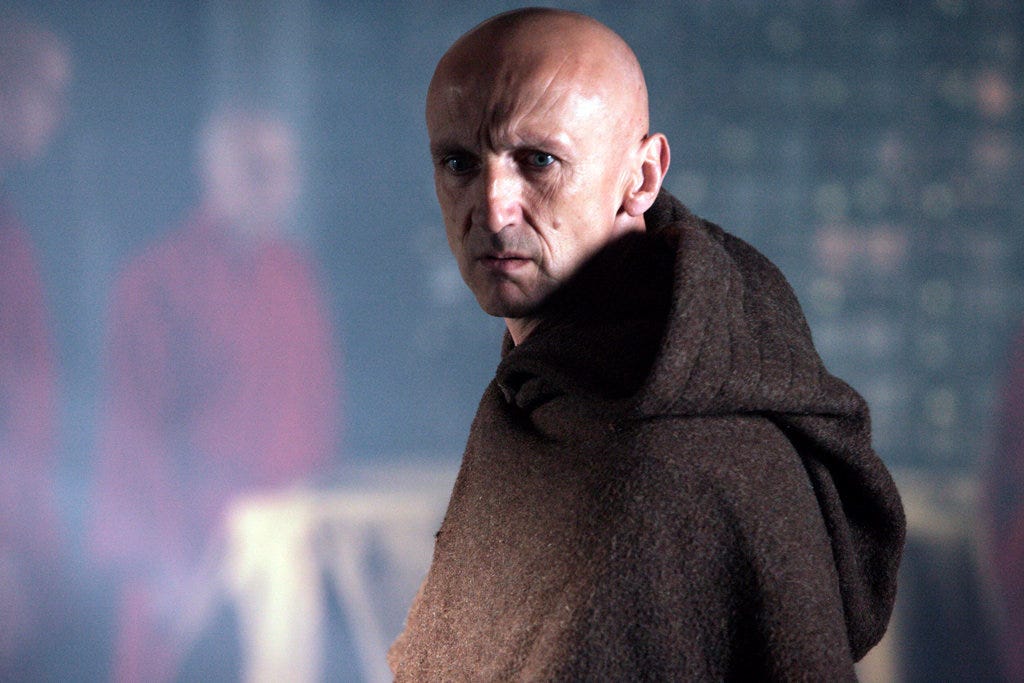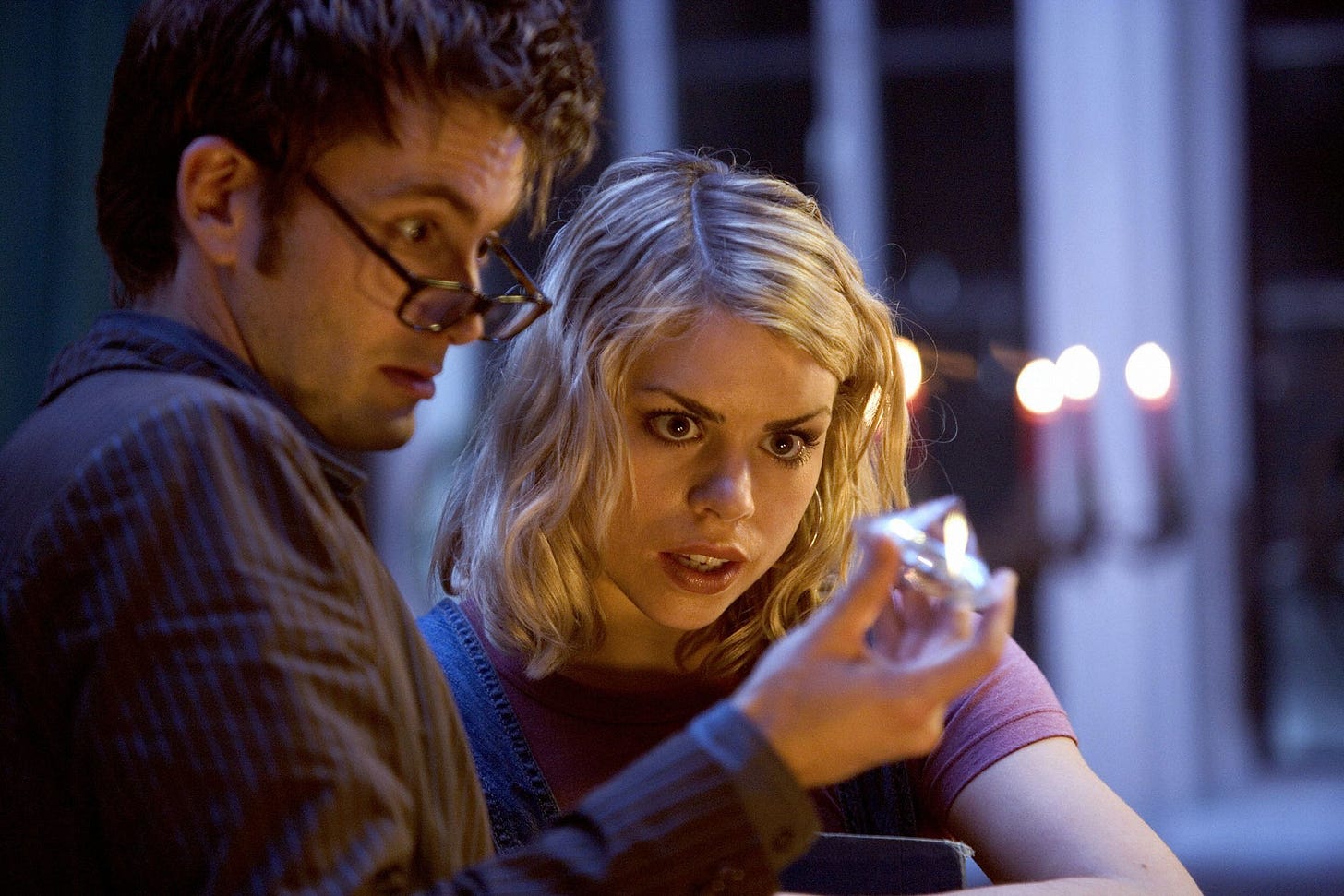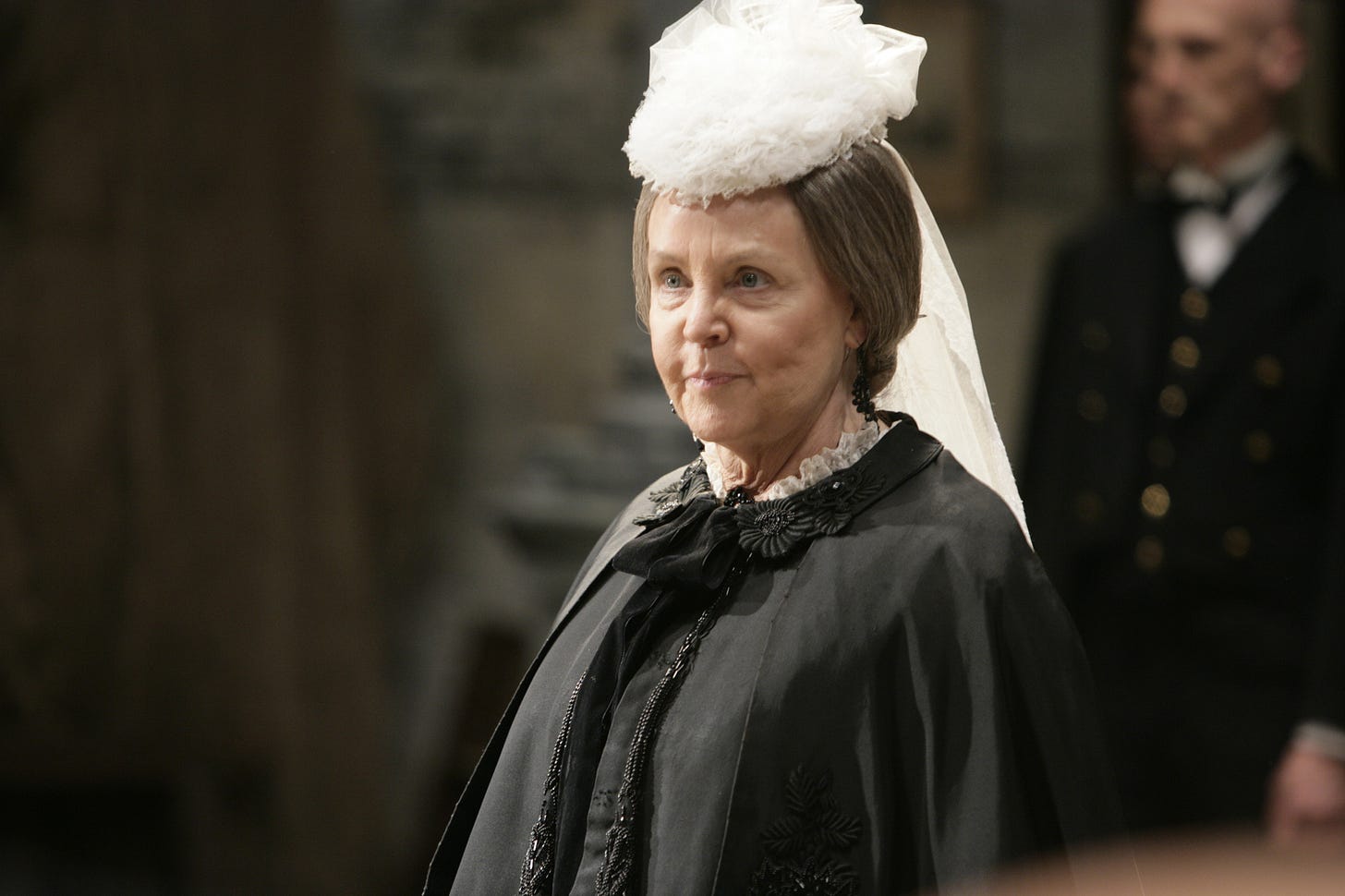'Tooth and Claw' Erased Queen Victoria’s Secret Lover
Doctor Who’s Torchwood origin story goes full werewolf fever dream, but in rewriting history, it leaves out one very important Highlander. Justice for John Brown!
Plot Summary
In the Scottish Highlands, the Doctor meets Queen Victoria, battles a werewolf, and seeds a secret alien-hunting organization.
Notable for:
Reveals the founding of Torchwood in 1879
RTD was originally going to state in the episode that these events in the parallel world (Pete’s World), without the Doctor, would have resulted in the Queen’s death, and that’s where that world diverged.
For many scenes, David Tennant uses his normal Scottish accent.
The Doctor says his name is James McCrimmon of Balamory, a reference to both his past and a Scottish children’s show.
Pauline Collins (Queen Victoria) also played a role in The Faceless Ones.
Per RTD in the commentary, the chase through the mansion was partially a conscious attempt to do better than the chase in Aliens of London.
Pete commentary:
Tooth and Claw is a nice reminder that this is a MODERN show. It’s really great to get that emphasis, and in the cold open, no less:
Right off the bat, rapid-edit cinematography for an excellent action scene, altering frame rates with tons of cuts.
Love the red tunics—beautiful use of color, which makes the monks easily identifiable as a menace when they’re guarding the house against escape.
Wire work: virtually unheard of in Doctor Who at this point. Finally it gets the Matrix/Hong Kong action treatment.
Cute that the Doctor intends to go to 1979: reminder that the TARDIS is general unreliable; the slamming down with Tennant and Rose on the floor is a nice callback to The Unquiet Dead—they’re back together, possibly even closer than before. This conveys to the audience, who may not be convinced of Tennant as the Doctor yet, that Rose is. Very smart way to keep easing fans into Tennant as Ten.
Background CGI is quite convincing; the wolf, less so, but it’s pretty good for the time. And they get to mask it in shadow.
How scary is Tooth and Claw? When Jack was seven or eight, he refused to watch it after the scene where the Host is hauled into the cellar, and you see its black eyes. Grace had been freaked when younger, too, but now she’s totally cool with it.
Smart design: the observatory room is very cobbled together, not fancy at all. It’s the room of an eccentric, not a legit scientist.
The lighting is very good—especially the dinner scene. Good use of close-ups vs. wider shots. Smart way to make exposition not feel like exposition.
The running gag of Rose trying to get the queen to say “I am not amused” is a bit of a stretch, but it speaks well of her—that she’s not intimidated by historical figures.
Is there any science to the moonlight-triggered lycanthropy at all? At least the wolf alien needs to be exposed to the light (as opposed to it “just happening” when the moon is full, as you’d do with magic or a curse) for the transformation to happen. So it acts as some kind of trigger. Is there something special about the moon that changes the light as it reflects? And a full moon bestows just enough to act as a trigger? Enh, it’s a stretch on a stretch, but I’ll go with it.
Trope of the old guy/steward who’s convinced the wolf is dead is an eye-roll moment. Wish he hadn’t been so obstinate—I might have cared more when he’s killed.
Interestingly, RTD says the wolf retreats from killing the women because it has a sense of honor, not because of mistletoe. The wolf does sniff the air before retreating though, strongly suggesting the latter.
Nice little moment when the Doctor and Rose hug both out of relief but excitement that there’s a werewolf, something even the Doctor has never seen, for real. Nicely follows the, “Oh, that’s beautiful” moment in the cellar.
It importantly disgusts the Queen, leading her to banish the Doctor. This is a genius move, in that it leads her to create Torchwood, setting off the arc plot, but it also shows the understandable reaction of many who place the blame of a crisis on the presence of people equipped to deal with it. It comes up again and again in fiction (the original Flash TV show, Captain America: Civil War) and arguably the real world. It’s a fair—and interesting—question: does the presence of powerful defenders invite powerful attackers? The problem is, once those defenders have proven their usefulness in battling back attackers, it would be hard to make a case to get rid of them.
Pretty great that the Queen gets to kill Father Angelo, who was (seemingly) established as the chief bad guy in scene 1.
The supporting cast, Lady Isobel and Sir Robert, do a good job humanizing the characters, and they kiss so much that they are very clearly in love. Raises the stakes nicely to emphasize the terror and deadliness of the wolf. Shame Robert doesn’t really get a good shot in. Would have been nice if he wounded the wolf somehow, slowing it down.
The Jesus shot of the wolf is a bit mental and OTT. I could have done with something slightly scaled down. It makes the wolf seem somehow noble in that it seems to give in to sacrificing itself, which is a little odd. Didn’t want to build the Empire of the Wolf after all, I guess.
Cool for Doctor Who to insert a sci-fi explanation for a quirk of the royal bloodline. The Doctor and Rose joking about it is very apt, tells you to not take it too seriously.
Final scene is much more serious: sets off the arc plot, pointing the Doctor to Torchwood. Funny how there was a reference prior to this—hints at what kind of “time can be rewritten” rules we’re working with.
What happened to the monks outside?
What did Pete’s family think?
Grace liked it, but she said it wasn’t something she’d want to come back to again and again.
Four Questions to Doomsday - Pete
Why did the Randomizer take us here? The last couple of stories were mostly inside, especially The Happiness Patrol. Here there are some fantastic scenes outside—great location work, and used to the max.
What if the evil plot had succeeded? Did it? I suppose if the wolf got more than just a “quick nip,” the Queen is more explicitly in the thrall of the wolf—that is, the wolf’s personality “migrates” to her. Perhaps this is done covertly through the next 120 years or so, leading to a serious attack from within in 2007 or so. That could have been the arc plot, though it would have turned Doctor Who into a camp horror show.
Where’s the Clara splinter? She’s the chief jeweler at Helier and Carew at the Royal Jewellers at Hazelhead. She’s secretly applying modern techniques, making them the absolute best in the world, and requiring the Queen to make her pilgrimage.
Dalek, Ogron, Professor Hayter, Viscount Banger, Fixed Point in Time, Lady Cassandra, or Zarbi? Lady Cassandra, ultimately. Memorable for the Torchwood kickoff and there’s great banter between Tennant and Piper that re-establishes the rapport between the characters. But the plot is thinner than you remember, and, frankly, the bar is higher for Tennant since he has so many bangers. This would be pretty good for most Doctors, but for him it’s just OK.




